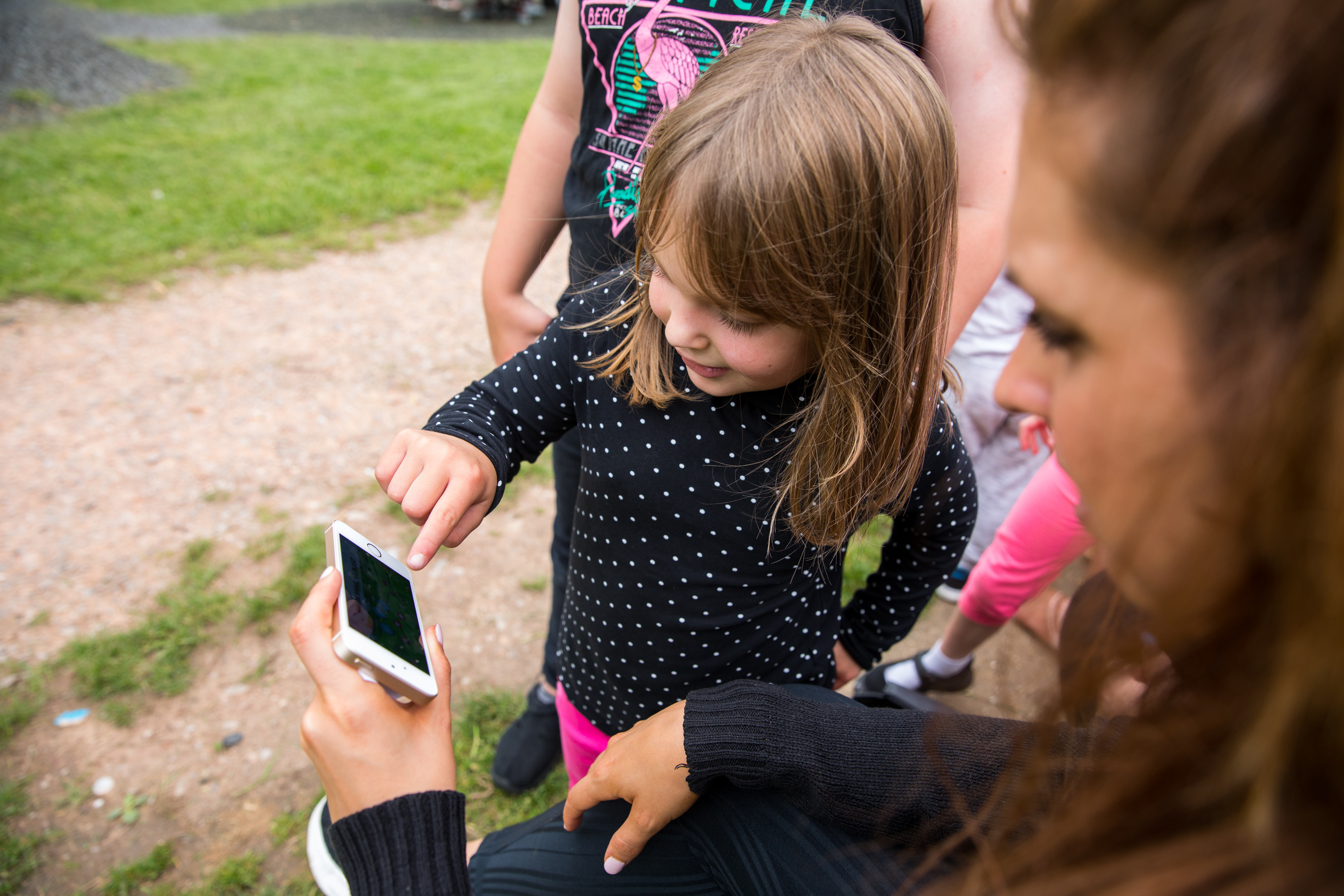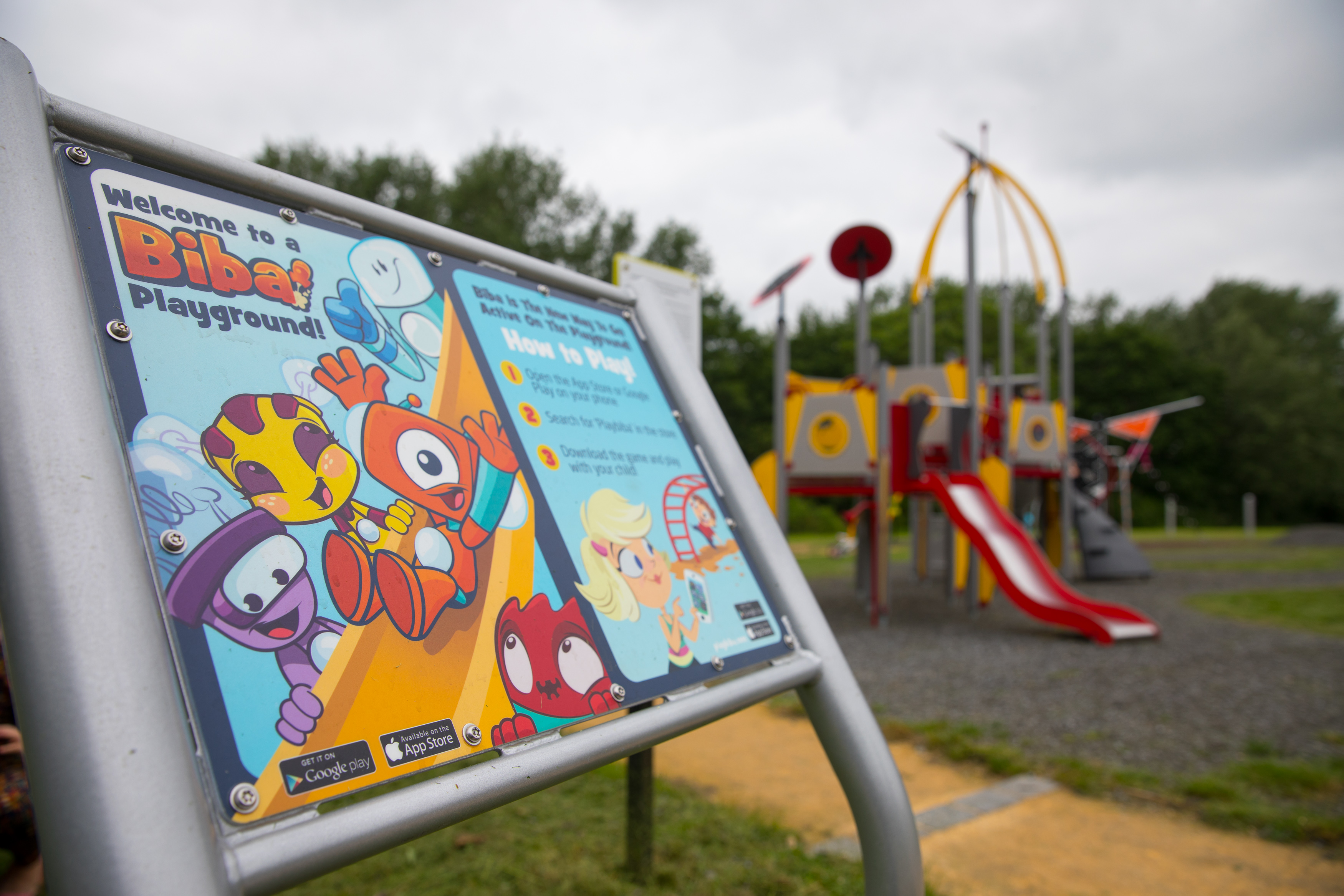From roads that monitor their own wear and tear, to streetlights that know when they need to dim and brighten, infrastructure is quickly finding its voice – and telling asset managers some very interesting stories.

Playgrounds are no different. One of the options available to park managers looking to smarten up their assets comes from Canadian company Biba, which uses free smartphone apps to combine digital and physical play in an imaginative and active way for families.
Although the games work on any playground, the installation of small augmented reality markers scanned with the smartphone during play unlocks the app’s full capabilities, providing a greater range of games, rewards, and scenarios.
The majority of Biba playgrounds are found in North America, but Australasia has also dipped a toe into the smart playground trend. Selwyn Council became the first in New Zealand to trial the technology, and Australia’s first smart Biba playground was installed in the City of Wanneroo’s Kinkuna Park in March 2018.
The playground picked up the National Growth Areas Alliance ‘Creating value through growth’ award in November, which recognised its ability to “help parents reorient kids’ screen fixation to the outdoors.”
This month, the City of Marion in Adelaide will become home to three Biba playgrounds in Seaview Downs, Trott Park and Morphettville.
How it works
Realising that technology isn't going anywhere and that kids are getting screens in front of them at younger and younger ages, the app’s developers wanted to motivate kids to get moving outdoors and help parents balance screen time, activity time and family time.
The technology features smartphone-based games that encourage kids to utilise existing playground equipment and their imagination to complete tasks. Challenges range from collecting imaginary characters (Biblets) from around the playground, to using equipment as a grand prix race course. Parents are instructed to hold the phone at all times, which the company says removes the risk of a cracked smartphone screen while also creating an opportunity for parents to engage with their kids during play, encouraging them to take risks in the playground.
The company hopes the app will encourage “screen obsessed” kids to become more active and form more positive relationships with technology.
Diving into data

Aside from helping address kids’ increasingly sedentary lifestyles, Biba CEO Matt Toner says the Kinkuna Park installation is a good example of the app’s other major offering: data insights.
The app collects a range of anonymised usage data (abiding by strict international privacy standards), which can give park managers insights into peak usage days and times, the most popular playground equipment and how vigorously kids are exercising. By bringing in external data sources such as weather, traffic reports and demography, park managers can even see how these factors impact playground usage – which could lead to insights such as the need for increased shade structures if playground usage plummets during hot summer days.
“Kinkuna Park is a really good example of Biba’s ability to show community fitness metric trends. The first data collected indicated that the playground was ranked roughly in the 50th percentile worldwide for the amount of physical activity of the kids at the playground,” Toner explains.
“If they’re in the 50th percentile of moderate to vigorous activity, it'll tell you that kids at that playground aren't getting the most moderate physical activity, which may be a reflection of the playground design, or of the community at large.
“Over time we saw that number skyrocket. From March until October, their moderate and vigorous physical activity levels increased to the 75th percentile.”
Toner says the uptick in activity levels was due to the council’s promotion of the smart playground and evidences the community’s growing adoption of the technology, leading to increased community usage.
The smart playgrounds can even show park managers the ROI on newly installed equipment.
“One of our largest clients is Phoenix, Arizona where it's very hot and very sunny. We've been able to measure the ROI on a sunshade installation by using Biba data-driven insights and intelligence,” Toner says.
“A lot of these structures have gone up and then nobody asks any questions. But to have an insight into utilisation is absolutely critical to assess the value of anything.”
Not a silver bullet for park managers

Brian Milne, Director of parks consultants Xyst, says new technology and apps that promote increased recreation and physical activity are a great development for communities.
“Collection of usage information is also something of great value, as parks managers are generally lacking this information,” Milne says.
However, as with most options currently available, there are limitations on the ability to provide a reliable answer to total usage. So, although smart playgrounds will give some indication of usage trends, it may not be the whole picture.
“The problem with the usage data is that it’s not going to give you a complete picture and the ability to report the total visitors to the playground – if it only records playground users that use the app, how reliable is that as an indicator?” he says.
Milne says it can be tricky digitally capturing usage data for playgrounds compared to toilet blocks or bushwalking tracks, which have clear entry points that a sensor can be attached to.
Although it’s more time consuming and relatively expensive, he says there may the option of combining digitally collected information with manually counting users through sample observation studies. This will enable a reasonably reliable extrapolation of total usage to be calculated based on the percentage using the digital apps versus total playground usage over a given time period.
Biba is currently working with the RAND Corporation, a large American research and development think-tank, to refine and augment Biba’s data science.
“Incorporating proven and accepted park sampling methodologies into Biba’s data model will convert Biba into a powerful sampling tool that can make accurate predictions about the totality of play at any playground in your city,” Toner says.